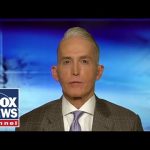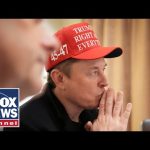President Donald Trump has once again made waves on the international stage, taking a bold and unapologetic stance on two of the world’s most pressing conflicts: the war in Ukraine and Iran’s nuclear ambitions. In a series of statements, Trump has laid out his strategy, which combines economic pressure with tough rhetoric, signaling his intent to hold adversaries accountable while prioritizing American interests.
Trump has expressed deep frustration with Russian President Vladimir Putin over the stalled peace negotiations in Ukraine. He has threatened to impose secondary tariffs on nations purchasing Russian oil if Moscow does not take meaningful steps toward a ceasefire. These tariffs, ranging from 25% to 50%, would penalize foreign countries engaging in trade with Russia, thereby isolating its energy sector even further. Trump’s approach underscores his belief in using economic leverage as a tool for diplomacy, a hallmark of his administration’s foreign policy. While critics may argue that such measures could strain relations with U.S. allies, Trump’s supporters view this as a necessary step to curb Russian aggression and bring an end to the conflict.
On the Ukrainian side, tensions have also emerged between Trump and President Volodymyr Zelenskyy over a proposed rare earth minerals deal. The agreement, which would grant the U.S. access to Ukraine’s valuable resources, is seen by Trump as a way to recoup American investments in Ukraine’s defense. However, Zelenskyy appears hesitant, leading Trump to accuse him of trying to back out of the deal. This disagreement highlights the complexities of balancing U.S. support for Ukraine with ensuring accountability and mutual benefit. For Trump, this deal represents not only an economic opportunity but also a means of strengthening Ukraine’s long-term stability—a move that aligns with his broader vision of “America First” diplomacy.
Meanwhile, Trump has turned up the heat on Iran, warning of military action and additional secondary tariffs if Tehran fails to reach a nuclear agreement with Washington. This hardline stance is consistent with Trump’s earlier withdrawal from the 2015 Iran nuclear deal and his reimposition of sanctions designed to cripple Iran’s economy. By targeting entities involved in Iran’s weapons procurement networks and threatening bombings if negotiations falter, Trump is sending a clear message that he will not tolerate Iran’s nuclear ambitions or its destabilizing activities in the Middle East. His administration’s focus on maximum pressure aims to force Tehran back to the negotiating table while safeguarding U.S. allies in the region.
Economically, these strategies carry significant implications for global markets, particularly in energy and trade sectors. Russia’s economy is already reeling from Western sanctions, and additional tariffs could exacerbate its struggles. Similarly, Iran faces mounting pressure as its oil exports dwindle under U.S.-led sanctions. Trump’s willingness to wield economic tools as weapons reflects his belief that financial constraints can achieve what diplomacy alone cannot: compliance from adversarial regimes. Critics may decry these measures as overly aggressive or risky, but proponents argue that they demonstrate strength and resolve in defending American interests.
As the world watches these developments unfold, one thing is clear: President Trump is not afraid to disrupt the status quo in pursuit of his goals. Whether through tariffs, sanctions, or tough rhetoric, he is determined to hold Russia and Iran accountable while advancing America’s strategic interests. The coming weeks will test whether these bold moves yield tangible results or further escalate tensions on the global stage. For now, Trump remains steadfast in his approach, confident that his hardline tactics will ultimately secure peace and prosperity for both America and its allies.




